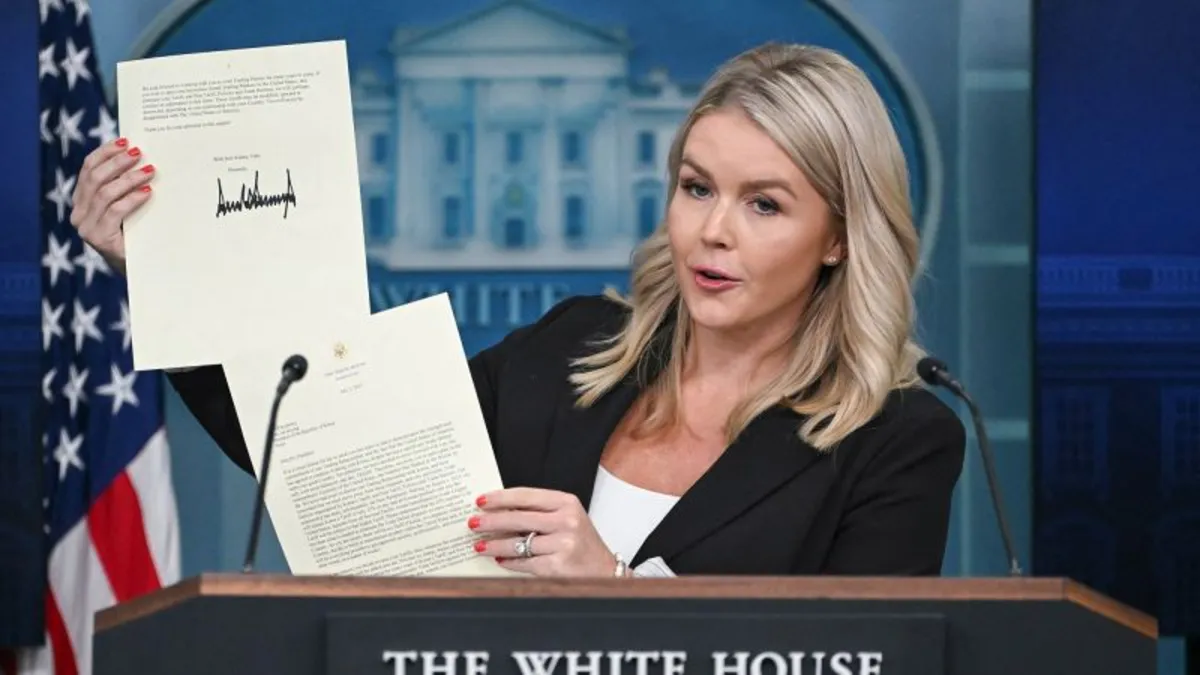
On Monday, President Donald Trump escalated the pressure on America’s trading partners by dispatching letters to the leaders of several countries, outlining new tariff rates. Concurrently, the White House announced that Trump would ease some of the tension by signing an executive action to extend the implementation date for all “reciprocal” tariffs to August 1. Initially set to take effect on Wednesday, these tariffs are designed to counteract trade imbalances.
The letters sent by Trump indicated that the new reciprocal tariff rates could either be higher or lower than those established in April. Notably, Japan’s Prime Minister Shigeru Ishiba and South Korea’s President Lee Jae-myung were among the first to receive these communications. Both countries are slated to face a significant 25% tariff starting August 1, as shared by Trump on his Truth Social platform, potentially providing additional time for negotiations.
Approximately two hours after the initial announcements, Trump revealed that he had sent similar letters to leaders from Malaysia, Kazakhstan, South Africa, Myanmar, and Laos, informing them of new tariff rates that could reach as high as 40%. This was just the beginning, as later in the day, Trump posted seven additional letters to leaders from Tunisia, Bosnia and Herzegovina, Indonesia, Bangladesh, Serbia, Cambodia, and Thailand, bringing the total number of letters delivered on Monday to 14.
White House Press Secretary Karoline Leavitt hinted that more letters could be forthcoming, stating that Trump was set to announce “approximately 12 of these letters” on Monday. While she confirmed that the announcements would be made via social media, she refrained from disclosing which countries would be highlighted.
In the letters, Trump expressed concern about the trade deficits that the United States faces, where American imports surpass exports to these nations. He emphasized that tariffs would be adjusted in response to policies he believes hinder American goods from being sold internationally. Furthermore, Trump urged foreign leaders to consider manufacturing goods in the United States as a strategy to avoid these tariffs.
This series of actions comes ahead of the initial deadline of 12:01 a.m. ET on July 9, when countries were expected to reach trade agreements or risk facing increased tariffs. This deadline marks the conclusion of a temporary pause on reciprocal tariffs that had been in place since April, during which affected nations encountered a minimum 10% tariff. However, Leavitt stated that Trump’s executive order would extend this deadline to August, citing it as “in the best interest of the American people.”
Collectively, the U.S. imported $351 billion worth of goods from the first seven countries that received letters on Monday, according to figures from the U.S. Commerce Department. Japan and South Korea, which rank as America’s sixth- and seventh-largest trading partners, accounted for a substantial 80% of this total, with combined shipments of $280 billion.
The looming possibility of higher tariffs could lead to increased prices for American consumers, particularly for essential imports such as cars, auto parts, semiconductors, pharmaceuticals, and machinery. In April, proposed tariffs indicated that Japan would face a 24% tariff, while South Korea was set for a 25% tariff.
Following Trump’s announcement of the 25% tariffs on Japan and South Korea, stock prices took a downward turn. The decline continued into the afternoon as tariffs of varying rates, from 25% to 40%, were announced for countries including Myanmar, Malaysia, Kazakhstan, Laos, and South Africa. Despite assurances from the White House that these country-specific tariffs would not be compounded by sector-specific tariffs, shares of auto manufacturers heavily invested in Japan and South Korea dropped sharply.
Major Japanese automakers such as Toyota, Nissan, and Honda saw their U.S.-listed shares decline by 4%, 7.16%, and 3.86%, respectively. These decreases may reflect the heightened risk of Trump imposing additional tariffs on vehicles from these countries if they retaliate against the proposed 25% tariffs.
In conclusion, Trump’s letters emphasized that tariffs could be modified based on the U.S.'s relationship with the respective countries, ending with a promise that “You will never be disappointed with The United States of America.” Following these developments, the Dow Jones Industrial Average closed down by 422 points, or 0.94%, while the S&P 500 and Nasdaq Composite fell by 0.79% and 0.92%, respectively, marking one of their worst days in recent weeks.